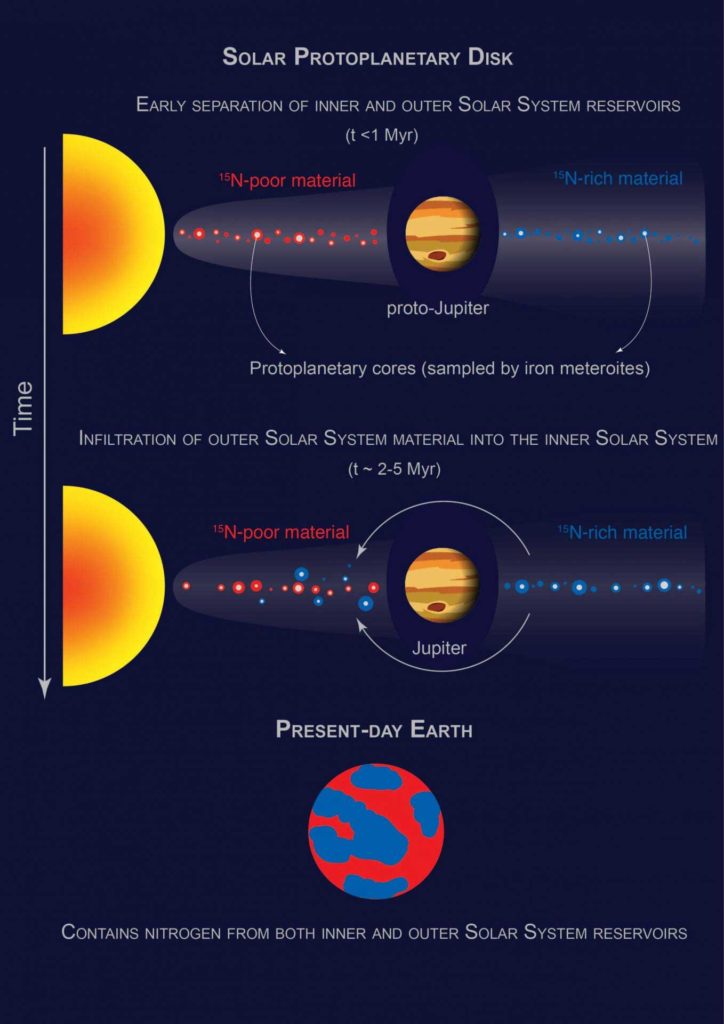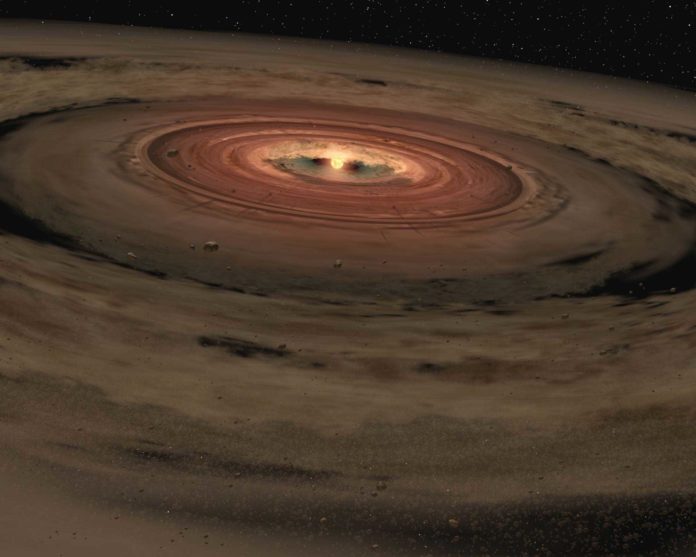Understanding the origin of life-essential volatiles such as nitrogen in the Solar System and beyond is critical to evaluating rocky planets’ potential habitability. Whether the inner Solar System planets accreted this volatiles from their inception or had an exogenous delivery from the outer Solar System is, however, not well understood.
Rice University scientists seem to found the answer. They have shown one primordial source of the indispensable building block for life was close to home.
The isotopic signatures of nitrogen in iron meteorites reveal that Earth likely got its nitrogen from the region beyond Jupiter’s orbit as well as the dust in the inner protoplanetary disk.
The study helps settle a prolonged debate over the beginning of life-essential volatile elements in Earth and other rocky bodies in the planetary system.
Lead author Damanveer Grewal said, “Scientists have always thought that the inner part of the solar system, within Jupiter’s orbit, was too hot for nitrogen and other volatile elements to condense as solids, meaning that volatile elements in the inner disk were in the gas phase.”
“Because the seeds of present-day rocky planets, also known as protoplanets, grew in the inner disk by accreting locally sourced dust, it appeared they did not contain nitrogen or other volatiles, necessitating their delivery from the outer solar system. An earlier study by the team suggested much of this volatile-rich material came to Earth via the collision that formed the moon.”

“But new evidence clearly shows only some of the planet’s nitrogen came from beyond Jupiter.”
In recent years, various nonvolatile elements were discovered in meteorites, including iron meteorites that occasionally fall to Earth, to show dust in the inner and outer solar system had completely different isotopic compositions.
Grewal said, “This idea of separate reservoirs had only been developed for nonvolatile elements. We wanted to see if this is true for volatile elements as well. If so, it can be used to determine which reservoir the volatiles in present-day rocky planets came from.”
Iron meteorites are remnants of protoplanets’ cores that formed simultaneously as the seeds of present-day rocky planets, turning into the particular case the scientists used to test their theory.
The scientists found a distinct nitrogen isotopic signature in the dust that washed the inner protoplanets inside around 300,000 years of the solar system’s formation. All iron meteorites from the inner disk contained a lower concentration of the nitrogen-15 isotope, while those from the outer disk were rich in nitrogen-15.
This proposes that the protoplanetary disk is divided into two reservoirs within the first few million years, the outer rich in the nitrogen-15 isotope and the inner rich in nitrogen-14.
Grewal said, “Our work completely changes the current narrative. We show that the volatile elements were present in the inner disk dust, probably in refractory organics, from the very beginning. This means that contrary to current understanding, the seeds of the present-day rocky planets — including Earth — were not volatile-free.”
Rice faculty member Rajdeep Dasgupta said, “the finding is significant to those who study the potential habitability of exoplanets, a topic of great interest to him as principal investigator of CLEVER Planets, a NASA-funded collaborative project exploring how life-essential elements might come together on distant exoplanets.”
“At least for our planet, we now know the entire nitrogen budget does not come only from outer solar system materials.”
“Even if other protoplanetary disks don’t have the kind of giant planet migration resulting in the infiltration of volatile-rich materials from the outer zones, their inner rocky planets closer to the star could still acquire volatiles from their neighboring zones.”
Journal Reference:
- Damanveer S. Grewal, Rajdeep Dasgupta, Bernard Marty. A very early origin of isotopically distinct nitrogen in inner Solar System protoplanets. Nature Astronomy, 2021; DOI: 10.1038/s41550-020-01283-y
